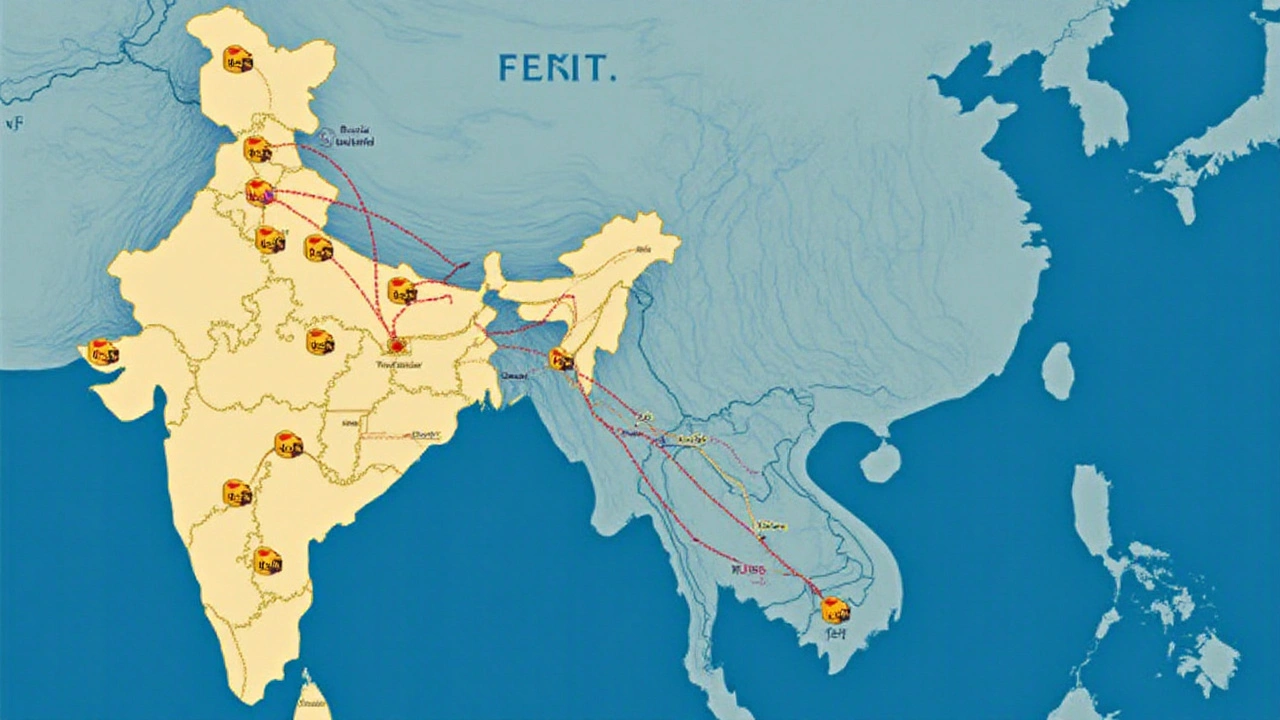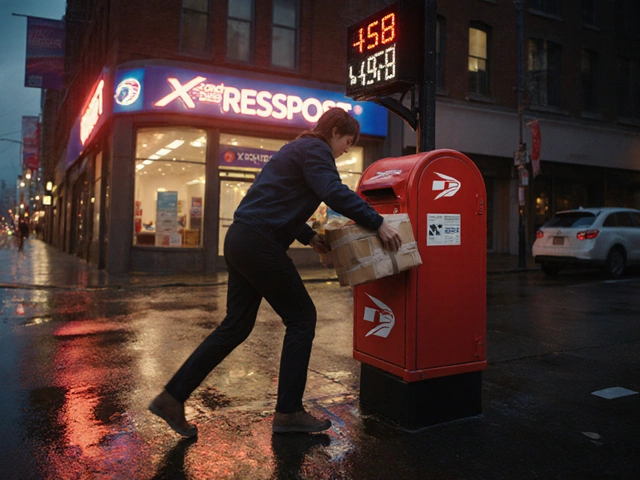When you have something important to send overnight, the choice between FedEx and UPS can be vital. These courier giants both claim to deliver your package by the next day, but at what cost?
Diving into the world of overnight shipping, there's more to consider than just the price tag. Package dimensions, weight, and delivery zones all play a part in determining the final cost. While FedEx may excel in some areas, UPS could take the lead in others, depending on specific requirements and destinations.
Before making a decision, it's useful to explore what each service offers in detail. From different time schedules to varied pricing strategies, both FedEx and UPS have unique traits. Gain insight into effective shipping strategies and hear from others who have navigated these choices before you. Let's find out how you can get the best deal for your overnight deliveries.
- Understanding Overnight Shipping Costs
- Service Comparisons: FedEx vs. UPS
- Tips for Cost-Effective Shipping
- User Experiences and Insights
Understanding Overnight Shipping Costs
When it comes to overnight shipping, the cost can vary significantly depending on several factors. Both FedEx and UPS offer next-day delivery services, but each has its unique pricing structure that customers need to understand. To start with, the weight and dimensions of the package play a crucial role in determining the shipping fee. A small envelope containing important documents will cost less compared to a large box filled with goods. Density is also considered, ensuring that lighter but bulkier packages aren't unfairly cheaper than denser ones the same size.
Another important factor is the destination zone. Both FedEx and UPS use a zone-based system that affects pricing. The farther the delivery destination from the sender, the higher the cost will likely be. Shipping across zones involves more logistics, fuel, and time, and this gets reflected in the surcharge. Most carriers, including FedEx and UPS, provide an online calculator that estimates the cost based on these parameters, allowing customers to plan accordingly. Similarly to dimension and zone, the shipment's declared value can alter the total cost, as additional fees for insuring higher values might apply.
"FedEx has consistently shown that their shipping calculator tool provides transparency and helps customers plan their deliveries with more accurate budgeting," says a spokesperson from Shipping Easy, a popular logistics analytics firm.
However, service time plays perhaps the most crucial role in pricing variations between FedEx and UPS when it comes to overnight shipping. Depending on how urgent the delivery is, prices can differ. Prioritizing packages for the earliest deliveries, for instance, costs more than those scheduled for later in the day. Likewise, Saturday delivery or shipping in rural areas could entail additional fees. This aspect of timing demonstrates one of the personalized services that can vary price fluctuations even within the same carrier. Reviewing different available services, from First Overnight to Standard Overnight, can reveal cost-efficient choices tailored to specific needs.
Seasonal variations can also impact costs, with peak periods such as holidays introducing surcharges to offset increased demand. Both companies adjust their rates year-round based on broader economic conditions, fuel prices, and regional concerns. Investing time in research or consulting with customer service might yield valuable discounts or alternative shipping methods. Finally, for businesses that regularly ship items overnight, establishing a corporate account with negotiated rates could lead to substantial savings over time. Spotting these trends and planning around them could help balance cost and convenience effectively.
In essence, unraveling the complexities behind FedEx and UPS costs is not merely about checking a price online. It involves taking into account the size, weight, delivery zone, timing, and economic contexts. With an understanding of the mechanics behind overnight shipping fees, choosing the right service becomes a methodical process where savings and efficiencies naturally follow.

Service Comparisons: FedEx vs. UPS
Choosing between FedEx and UPS for overnight deliveries involves more than just selecting a name. Each company has tailored its services to meet diverse customer needs while introducing competitive pricing strategies. For starters, both FedEx and UPS offer a range of overnight delivery options depending on urgency and location. FedEx's overnight services include Standard Overnight, Priority Overnight, and First Overnight, each with varying cut-off times and delivery commitments. Similarly, UPS provides Next Day Air Early, UPS Next Day Air, and UPS Next Day Air Saver, which have different delivery time frames to suit different requirements. As you venture into this, it's critical to assess your urgency and decide how early your package needs to arrive at its destination.
Analyzing these options, an essential factor to note is delivery commitment times. FedEx First Overnight guarantees delivery as early as 8:00 AM the next day, which outpaces UPS's earliest at 8:00 AM only for select locations with their Next Day Air Early service. On the flip side, UPS Next Day Air Saver tends to be easier on the wallet but delivers by the end of the day in most areas. Your shipping priorities, whether time-sensitive or cost-effective, will play a crucial role here. The choice often boils down to your recipient's location; this nuance can influence whether FedEx or UPS wins the race to the doorstep.
"Time is what we want most, but what we use worst." – William Penn
When it comes to pricing, there's a noticeable tango between the two. FedEx's upfront cost might appear slightly higher at times; however, their dimensional weight pricing model can save costs for lighter packages. UPS, however, shines with a more flexible customer loyalty program, further slashing down prices for repeat customers. Factors such as fuel surcharges, residential delivery fees, and package handling can also tilt pricing in unexpected ways. So, scrutinizing these elements is vital to avoid surprises in your bill. Another standout feature is that FedEx offers a Money Back Guarantee for specific services, assuring a full refund if your delivery does not meet their promised time. Using such guarantees can be reassuring, especially when dealing with time-critical shipments, giving FedEx a slight edge in customer assurance.
Additional Services and Support
Beyond the ticking clock and dollar signs, extra services can be a decisive factor. FedEx and UPS both provide detailed shipment tracking tools, real-time updates, and signature confirmation options. FedEx Insights, a service offering predictive analytics for shipping management, showcases how technologies can enhance your delivery experience. UPS has its My Choice program, where consumers can customize delivery schedules and even redirect shipments with greater flexibility. Choosing based on these auxiliary features could mean opting for a service that best suits logistical needs beyond just price and speed. Each courier tries to outdo the other by marrying advanced tech and excellent customer support, striving to make the stressful task of urgent shipping a breeze.
When deciding between FedEx and UPS, your choice will heavily lean on what you value most: cost, reliability, speed, or flexibility. By breaking down their service options, analyzing the finer details like hidden fees, and considering personal or professional priorities, you can confidently choose the one that fits your shipment needs. Whether it’s FedEx’s early morning promises or UPS’s budget-friendly late-evening deliveries, being informed paves the way to a productive shipping experience, ensuring you’re not only saving money but harnessing efficiency.

Tips for Cost-Effective Shipping
When it comes to overnight shipping, finding ways to cut costs while ensuring reliability can save both money and headaches. As the competitive world of shipping continues to evolve, it's essential to explore a few strategic tips that might lighten the financial load without compromising service quality. By understanding fee structures, leveraging technology, and choosing the right service, you'll be well on your way to mastering the art of cost-effective shipping.
One effective approach is to familiarize yourself with the specific details of what affects shipping rates. While many gravitate towards weight as the main culprit for high fees, package dimensions and delivery zones often play a significant role, too. The size of an item can sometimes outweigh its heft in terms of cost implications. It's also helpful to note that both FedEx and UPS categorize zones based on distance. Shipping from one coastal city to another might inflate costs compared to sending a package across town. As you plan, keep a particular eye on dimensional weight pricing, especially if you're shipping lightweight but large parcels.
Investing time in exploring contract negotiations with carriers can also yield cost-saving benefits. For businesses with regular shipping needs, engaging with account representatives to unlock potential discounts or incentives is crucial. According to Jane Carlson, a logistics analyst:
“Negotiation with carriers is not just for big players. Even small businesses can find room for discounts if they consistently inquire and discuss their shipping patterns.”Building this communication with shipping companies can uncover hidden opportunities for savings, such as volume discounts or loyalty programs.
To utilize technology to your advantage is another great tip. Calculating shipping costs manually may lead to errors that can be expensive down the line. Instead, using software solutions designed to compare shipping rates in real-time is wise. These technological tools can provide insights into the best rates available for your particular needs, ultimately saving you both time and money. Being aware of the overnight shipping rates offered by both FedEx and UPS allows for better decision-making, ensuring you aren't overpaying for services your packages might not necessarily need.
Consider also the packaging itself. Both FedEx and UPS provide a variety of packaging solutions that might negate the need to buy separate packing materials, leading to cost savings. Taking advantage of carrier-provided packaging isn't solely about slashing costs—it's about convenience and sustainability. Think of secure packs, which often come free of charge, reducing the need to purchase your own boxes. Relying on these carrier options also ensures your shipment is accepted without a hitch, avoiding surcharges linked to improperly sized or improperly packed items.
A simple yet often overlooked tip is to schedule pickups strategically. Many businesses find themselves caught in the whirlwind of daily operations, allowing pickups to become an afterthought. Planning these around driver availability, proximity, and peak times ensures streamlined processes. Staying in rhythm with a courier's schedule can earn you savings that might seem negligible at first, but tend to accumulate over multiple shipments. The result? You maintain efficient shipping while keeping costs minimal.

User Experiences and Insights
Diving into the real-world experiences of using FedEx and UPS for overnight shipping reveals a colorful tapestry of stories and strategies. Many users highlight that the decision often boils down to specific needs and preferences rather than a one-size-fits-all solution. Several business owners have noted that they consistently choose FedEx for its reliability in specific regions, especially where their network might be more established. Conversely, others emphasize UPS's reputation for handling voluminous packages with great care, making it a frequent choice for heavier shipments. An interesting aspect shared by frequent shippers is the value of loyalty programs; both companies offer discounts to regular users, which can significantly cut down costs over time. This might be an invaluable tip for businesses with regular shipping needs, ensuring they can leverage the best rates possible.
A compelling insight from users is the importance of understanding delivery zones. The intricacies of these zones can be tricky, as both FedEx and UPS have areas where they excel. For instance, users located in metropolitan areas might find the timing for overnight delivery varies significantly from those in rural regions. An entrepreneur once shared that after switching their main office location, UPS deliveries arrived consistently faster, prompting a shift in their shipping strategy.
In a survey conducted by a leading logistics magazine, 62% of respondents stated that UPS managed better on-time delivery for their enterprise needs.
For smaller packages, some users report FedEx might offer a slightly cheaper option, but when volume and size increase, UPS's pricing becomes more competitive. This seesaw balance often nudges companies towards tailoring their choice based on size, weight, and urgency of the delivery. Additionally, several personal accounts highlight customer service experiences which play a vital role in loyalty. FedEx is often praised for its rapid response time in case of queries or issues, while UPS is lauded for its problem-solving approach and flexibility.
Now, let's touch upon analytics and numbers. According to a recent market study, FedEx's overnight delivery service, in 2023, showed an on-time delivery percentage of around 93% whereas UPS stood at a close 92%. This little edge might be negligible for most but crucial for businesses working with tight schedules. For many users though, personal anecdotes and recommendation networks form the backbone of their decisions. Engaging in industry forums or seeking advice from other users often unveils nuanced insights that may not always reflect in a direct comparison of features or prices.





